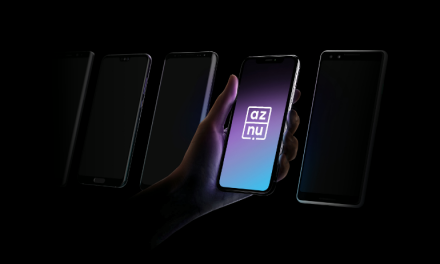Attributed to Alan Jones, Marketing Manager D-Link UK &I
Over the course of the last two years, the traditional concept of ‘the office’ has taken on new meaning. Once limited to the four walls of a building, offices around Europe are now accessible from almost anywhere, provided there is good Wi-Fi reception. Accelerated by remote working during the pandemic, many businesses have acknowledged the benefits this new way of working affords their staff.
As a result, a lot of European businesses have moved to a hybrid working pattern as a way to continue to provide this flexibility as well as retain traditional office culture benefits such as in-person meetings, brainstorms and water cooler chats. In fact, according to a Gartner survey, 99% of HR leaders expect employees to work in some kind of hybrid arrangement moving forward.
As hybrid working continues to go mainstream, the office is expanding not only from office to home but increasingly to establishments and outdoors areas. Although a culture of coworking spaces and working from cafes and restaurants, for example, existed before the pandemic, it is likely that these will continue to expand to accommodate hybrid and remote workers moving forward. Those with outside seating or quiet areas seem particularly attractive, especially as we move into the warmer months and people want to benefit from being outside.
In this setting, SMBs in the hospitality and coworking sectors have an opportunity to attract more customers. However, in order to demonstrate competitiveness, having the right infrastructure will be key, for example, the ability to offer exceptional Wi-Fi which is powerful and efficient as well as secure. To help SMBs make the most of these opportunities we have put together a few key considerations to take note of when assessing optimum technology setups here:
The ability to offer a secure and resilient connection
Perhaps the most significant issue for those working outside of a normal office is the need for adequate technology set up and combatting security issues. Unprotected and public networks are an easier target for cyber threats and are typically more vulnerable than office networks.
Although workers and their employers are responsible for providing appropriate equipment, the security level of these is only as secure as the Wi-Fi. Anyone connecting to an establishment’s Wi-Fi wants to see appropriate steps taken to safeguard their devices and their work against cyber threats.
Some solutions offer a management system that allows small businesses to successfully manage security and privacy. They save power and improve security with the wireless scheduler feature that switches off wireless connectivity when not needed and additional security measures can be added easily.
Easy access and network management with Nucleus
Network management solutions enable SMBs to not only automate and monitor their network, but also to make the most out of features such as the customisable captive portal and 3rd party integration that can provide Wi-Fi analytics, wayfinding, and marketing automation which can be done remotely or onsite.
The customisable captive portal allows businesses to create a seamless log-in experience and 3rd party integrations can automatically check-in customers via guest Wi-Fi. This type of software allows stores to get a good picture of who is using the Wi-Fi as well as to measure and analyse footfall. What’s more, it enables a great deal of flexibility to scale networks to accommodate more access points whilst retaining a robust and centralised management system.
Widespread Wi-Fi coverage that reaches everywhere
Good wireless performance means coverage in all areas of a room or space. Access points are key to enabling this, as well as providing more speed and the ability to handle bandwidth-intensive services to work quickly and smoothly. Wireless access points can be managed remotely and constantly, allowing for visibility of a network’s status and how many clients are connected.
This approach was used by D-Link for Impact Hub, a Swedish co-working space which consists of a network of more than 10,000 entrepreneurs. Impact Hub was suffering from interference and poor Wi-Fi performance. In order to eliminate all of the interference and achieve a stable, fast wireless network, D-Link chose to deliver a wireless network based on the new 802.11ac standard, which can achieve transmission in both the 2.4 GHz and the 5GHz band.
The system covered the office space of 478 square metres with five wireless access points. In addition to this, two switches and a central management system were also supplied. The five access points installed provide a combined wireless speed of up to 1,750 Mbps. This enables bandwidth-intensive services to work quickly and smoothly for all clients. 802.11ac is also reverse compatible with old standards. The wireless Gigabit Switch Controller, DWS-3160, forms the basis of the network.
As more people take up working from different places, whether in the office, their home or at an establishment or co-working space, consistency in connectivity is key. For those SMBs that are looking to attract more footfall and regular customers, improving overall Wi-Fi setups, security and control is essential. Whether connecting a laptop or a phone, or any other Wi-Fi device, customers want to know that they are safe to do so and that where they choose to work now and in the future can be trusted with good Wi-Fi.
Thanks for reading this article, please continue to support us and check out our other reviews and follow us on Social media: Facebook, Twitter, Instagram, and Linkedin and don’t forget to sign up for our newsletter below.










Recent Comments